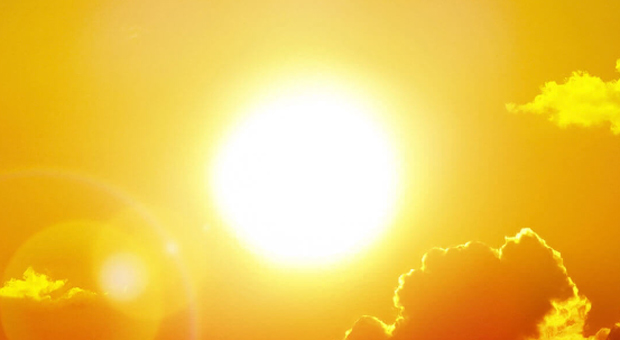The Sun’s surface is currently on overdrive as the Earth enters a period of high cosmic activity, with a major new threat discovered in the form of an enormous sunspot visible from the surface of Mars.
While sunspots are not usually a cause for concern, scientists warn that the gargantuan sunspot group AR3576, which measures over 124,274 miles, could trigger powerful solar flares and wreak havoc on the Earth.
Sunspots, which appear as dark holes on the Sun’s surface, are known to be so disruptive they can trigger coronal mass ejections (CMEs) – large plasma and magnetic releases from the Sun.
According to Space Weather, as the Earth approaches solar maximum, a period of high solar activity, sunspot regions such as AR3576 are becoming more common.
THE MARTIAN SUNSPOT IS FACING EARTH: A sunspot so big it was seen last week as far away as Mars has now turned to face Earth. NASA's Perseverance rover photographed it from Jezero crater, and it has only grown bigger since then. Here's how AR3576 looked yesterday from Argentina: pic.twitter.com/C76VBlxDEv
— JimeV Augmented Mouse (@Jelwoodv) February 8, 2024
The National Oceanic and Atmospheric Administration (NOAA) has predicted the sunspot may now trigger X-class solar flares, the most dangerous of a solar flare, which could take down satellites, GPS communication, and the electrical grid.
Such an event occurred on 1–2 September 1859 when one of the largest geomagnetic storms, known as the “Carrington Event,” took down telegraph systems across Europe and North America.
Back then, the world was not so reliant on electricity, and there certainly was no such thing as the internet, so despite the solar storm being as devastating as it was, the world could continue without any real problems.
Today, however, a solar storm of that magnitude would bring the Earth to a grinding halt because we are so reliant on GPS, digital communication, and electricity.
Such an event could lead to monetary loss heading into the trillions, and the dependence on electrical systems could lead to a massive loss of life.
According to Astronomy:
In addition to electrical failures, communications would be disrupted on a worldwide scale. Internet service providers could go down, which in turn would take out the ability of different systems to communicate with each other.
High-frequency communication systems such as ground-to-air, shortwave and ship-to-shore radio would be disrupted.
Satellites in orbit around Earth could be damaged by induced currents from the geomagnetic storm burning out their circuit boards. This would lead to disruptions to satellite-based telephone, internet, radio, and television.
Just last month, a large solar storm disrupted radio and GPS, according to models by NASA and NOAA.
“Whilst these storms cannot harm us or nature directly, they are disruptive and potentially very damaging to technology,” Huw Morgan, head of the Solar Physics group at Aberystwyth University in the U.K., told Newsweek.
“Electric currents are induced in Earth’s crust, and this can cause surges and damage to power grids. Communications can be disrupted, and GPS navigation. Air flights at high latitudes are prone to radiation doses, requiring cancellation or rerouting. And there’s a danger to satellites and astronauts,” Morgan said.
StronGeomagnetic storms can also cause auroras to be seen further south from the North Pole. Northern Lights can also be visible from Illinois and Oregon due to G3 storms.
We have one, if not two #solarstorms headed for Earth today! The first launched near Region 3555. It is expected to hit early to midday January 22. The second is a side-swiping storm launched near 3559. It may give us a glancing blow January 23. Also, an unstable filament is in… pic.twitter.com/Iwe744c5xe
— Dr. Tamitha Skov (@TamithaSkov) January 21, 2024
Could 2024 be the year the grid goes down?
Judging by the increased solar activity, the Earth could experience something much worse than the “Carrington Event,” mainly due to our dependence on digital infrastructure.
Even with advanced warnings from NOAA’s Space Weather Prediction Center, the world would have hours, if not minutes, to prepare.
“The much stronger events don’t happen every cycle,” Daniel Verscharen, an associate professor of space and climate physics at University College London, told Business Insider.
“But during a maximum of a strong cycle like the one that is coming, it’s more likely to get some of those events that cause power outages here on Earth,” he said.











